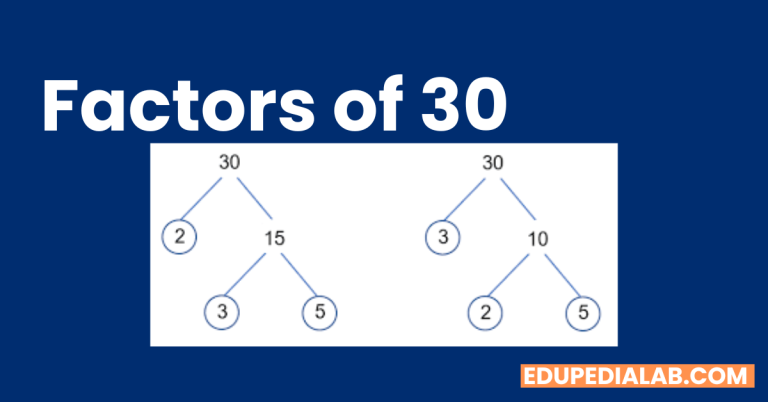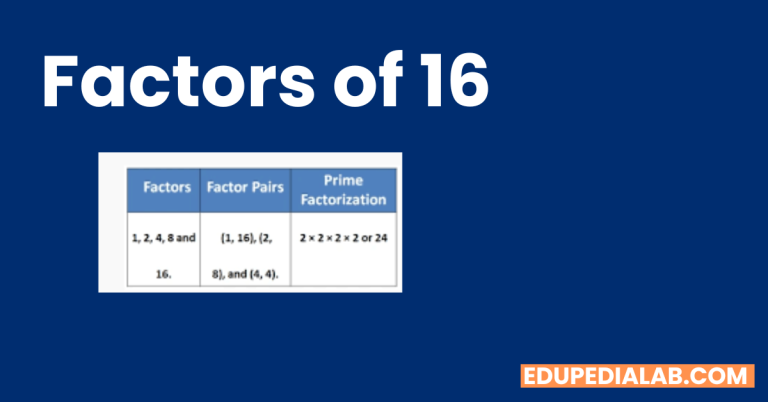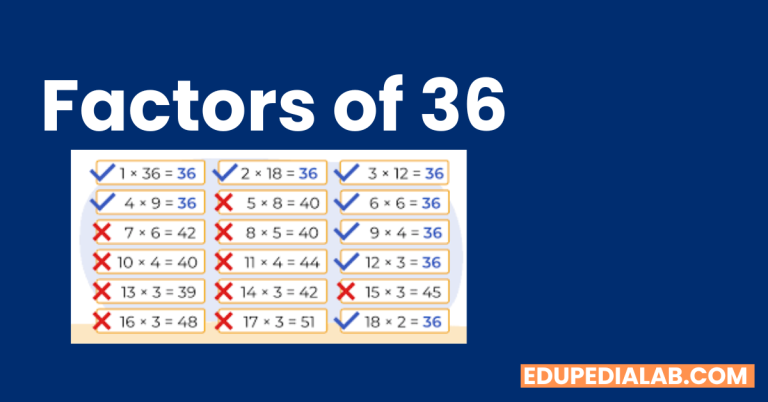Factors of 10 (Explained By Experts)
Factors of 10
To understand the factors of 10, we need to first grasp the concept of factors. Factors are the numbers that divide another number without leaving a remainder. In the case of 10, its factors are 1, 2, 5, and 10. Let’s take a closer look at each of these factors and understand their significance.
You can see the Factors OF 100 the number 10 is one of them.

Factor 1: The Unity Factor
The number 1 is the first factor of 10. It is a unique factor because every number is divisible by 1. In the case of 10, dividing it by 1 results in the number itself. This factor symbolizes unity and the indivisible nature of numbers. The Unity Factor is also referred to as Power Factor.
Factor 2: The Divisibility Factor
Factor 2 represents divisibility by 2. Dividing 10 by 2 gives us 5, which is also a factor of 10. This factor is significant in the field of mathematics and plays a vital role in number theory and prime factorization.
Factor 5: The Halfway Point
Factor 5 marks the halfway point of the factor of 10. Dividing 10 by 5 results in 2, which is another factor of 10. This factor is often associated with symmetry and balance, as it divides the number into two equal parts.
Factor 10: The Complete Set
Factor 10 represents the number itself. When we divide 10 by 10, the result is 1, which is also a factor of 10. This factor signifies completeness and serves as a reference point for other factors.
Applications of Factors of 10
The factors of 10 have widespread applications across various fields. Let’s explore some of the practical uses of these factors in everyday life.
Finance and Accounting
In finance and accounting, factors of 10 are crucial for calculations involving percentages, interest rates, and decimal conversions. For example, dividing a number by 10 is equivalent to moving the decimal point one place to the left, making it an essential tool in financial analysis.
Measurement Systems
Factors of 10 play a significant role in measurement systems such as the metric system. The metric system is based on powers of 10, making conversions between different units of measurement simple and intuitive. This factorization allows for easy scaling and comparison of quantities.
Computing and Digital Systems
In computing and digital systems, factors of 10 are instrumental in data storage and memory management. The binary system used in computers relies on powers of 2, which is a factor of 10. This relationship is critical in understanding digital representation and the efficient utilization of computing resources.
Mathematics and Number Theory
The factors of 10 are fundamental in number theory and mathematics. They serve as building blocks for various mathematical concepts, including prime factorization, divisors, and multiples. The study of factors of 10 forms the foundation for advanced mathematical principles.
Frequently Asked Questions (FAQs)
Q: What are the factors of 10?
A: The factors of 10 are 1, 2, 5, and 10. These numbers divide evenly into 10 without leaving a remainder. Factorization allows us to break down a number into its constituent factors, and in the case of 10, these are the factors that make up this significant number.
Q: What is the significance of the factors of 10?
A: The factors of 10 hold mathematical significance and have practical applications in various fields. Understanding the factors of 10 helps in computations, measurements, and even in the design and operation of digital systems. These factors provide insights into the properties and divisibility of 10.
Q: How do the factors of 10 relate to other numbers?
A: The factors of 10 are essential in the study of divisors, multiples, and prime factorization. By examining the factors of 10, we can identify the numbers that evenly divide into 10 and the prime factors that make up its unique composition. This knowledge extends to other numbers and helps in understanding their properties as well.
Q: Can the factors of 10 be applied in real-life scenarios?
A: Absolutely! The factors of 10 find practical applications in finance, measurement systems, computing, and mathematics. In finance, understanding percentages and interest rates relies on the divisibility properties of 10. Measurement systems like the metric system are based on factors of 10, making conversions between units seamless. In computing, factors of 10 aid in memory management and data storage. Lastly, mathematics extensively utilizes the factors of 10 in various calculations and number theory.
Q: Are there any special properties associated with the factors of 10?
A: While the factors of 10 themselves possess unique properties, their significance lies in their role as building blocks for other numbers and mathematical concepts. The factors of 10 contribute to the understanding of divisibility, prime numbers, and multiples, making them integral to the study of number theory.
Q: How can I apply the knowledge of the factors of 10 in my daily life?
A: Understanding the factors of 10 can enhance your problem-solving abilities, especially in areas that involve computations, measurements, and even decision-making. By recognizing the divisibility of 10, you can simplify calculations and conversions, making tasks more efficient and accurate.
Conclusion
The factors of 10 are not just numbers but windows into the fascinating world of mathematics and its practical applications. From its role in finance to its impact on computing and measurement systems, the factors of 10 shape our understanding of numbers and their relationships. By unraveling the secrets behind the factors of 10, we gain a deeper appreciation for the significance of this remarkable number.
So, the next time you encounter the number 10, remember the factors that make it special. They are not just mathematical entities but the key components of a significant number that influence various aspects of our lives.





